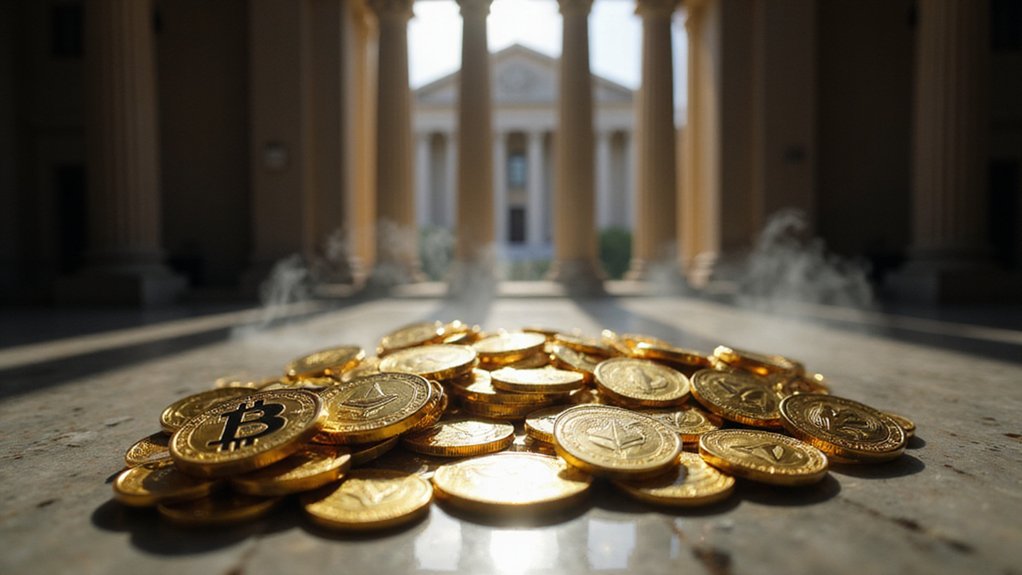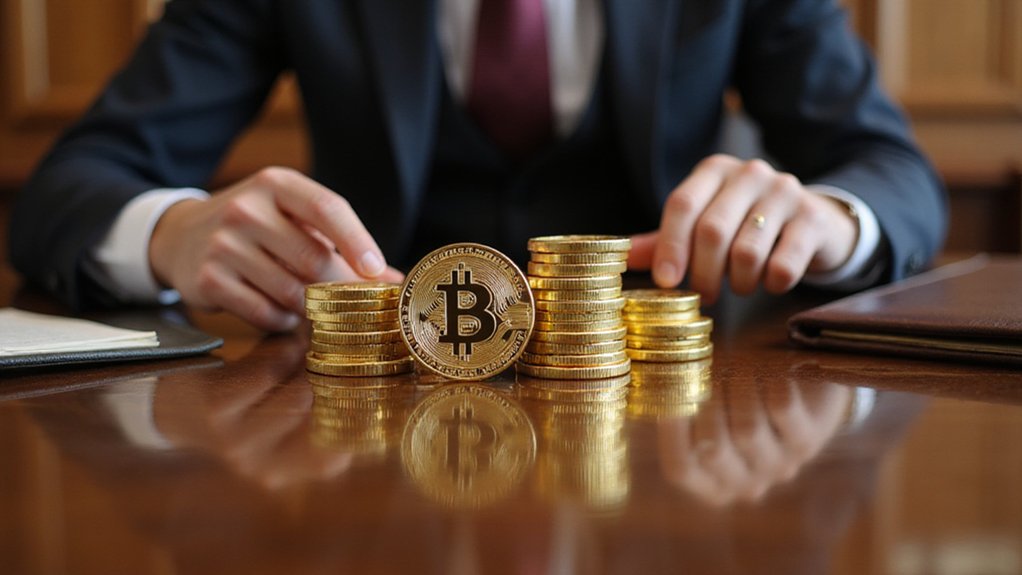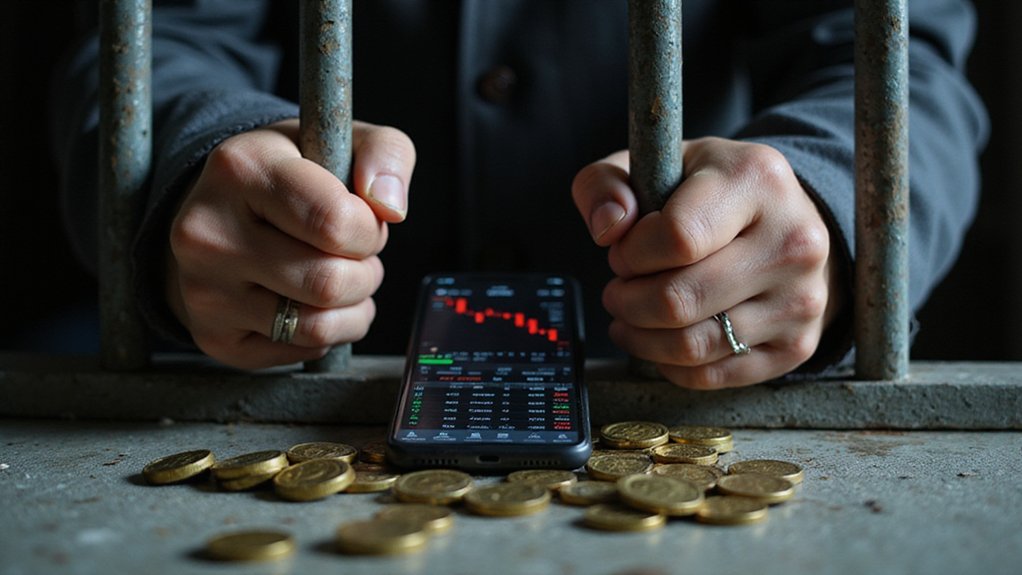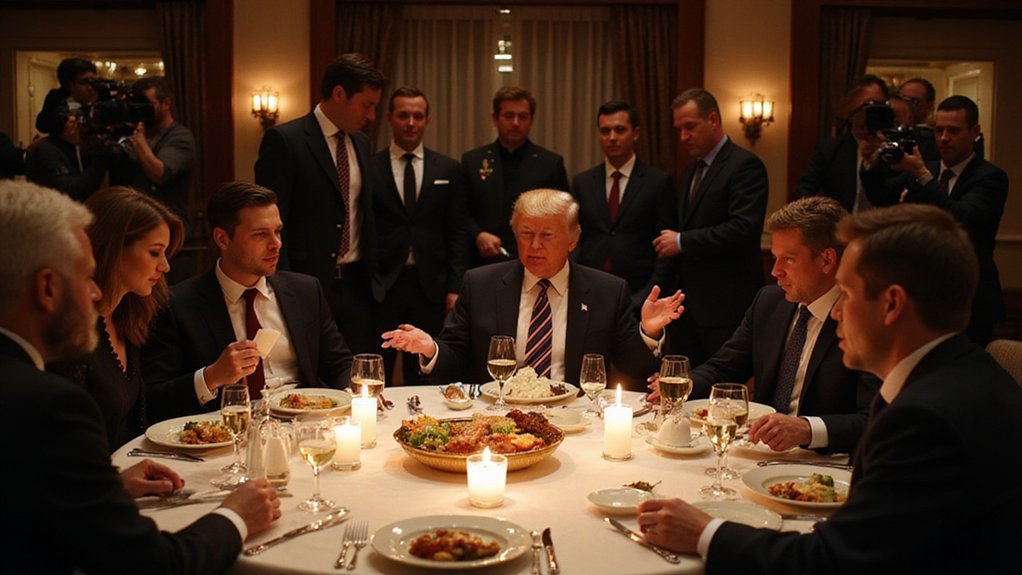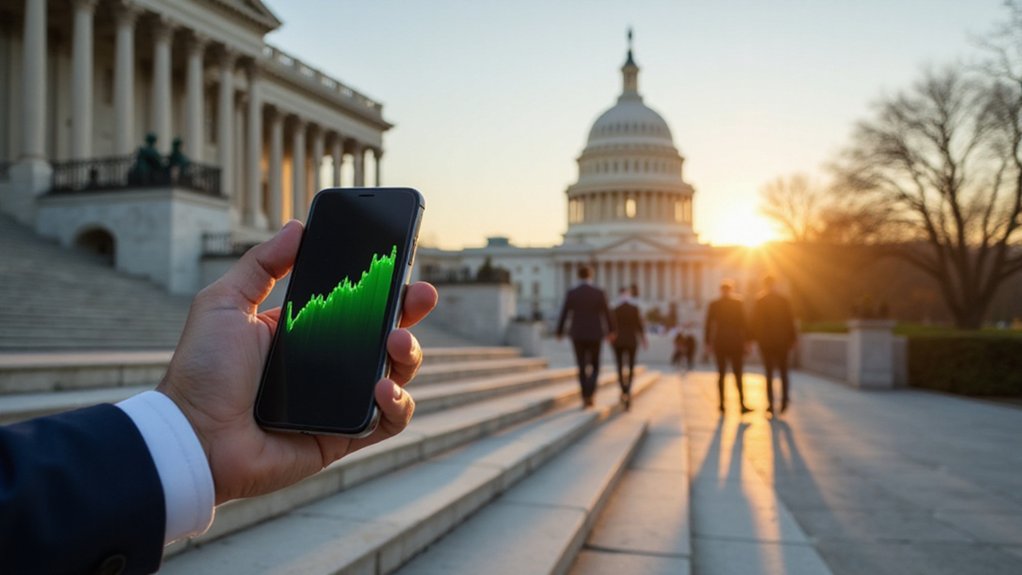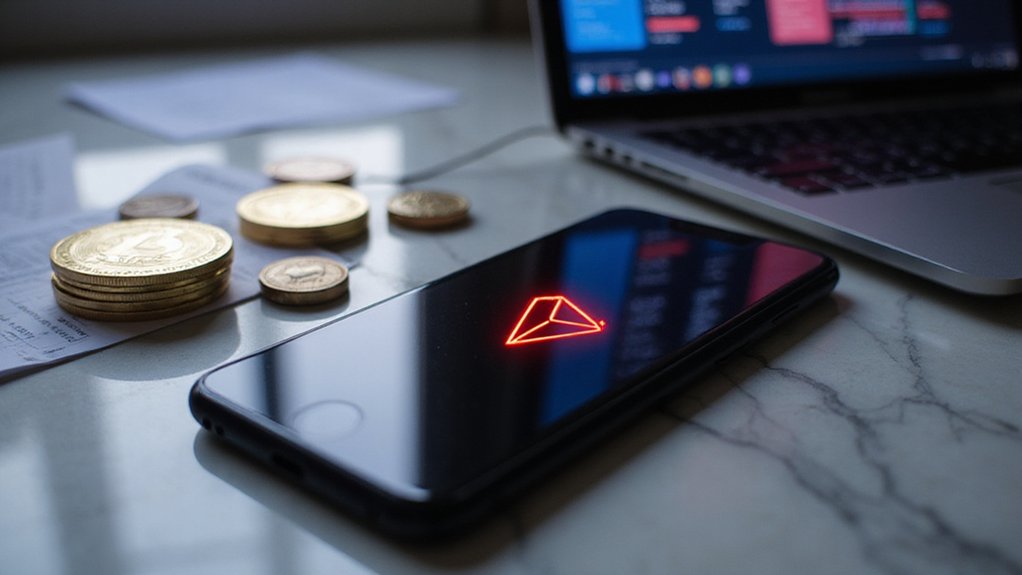The transformation of a former president into a cryptocurrency mogul represents perhaps the most audacious marriage of political power and digital assets in modern financial history.
Trump’s meteoric rise from crypto skeptic to blockchain billionaire began with $TRUMP, a Solana-based meme coin that materialized on January 17, 2025, instantly creating over $20 billion in paper wealth from thin air—a feat that would make even the most seasoned venture capitalists pause in bewilderment.
Digital alchemy at its finest: transforming presidential branding into $20 billion of speculative wealth through strategic timing and market psychology.
The mechanics behind this digital alchemy prove remarkably straightforward: one billion tokens, strategic timing, and the inexplicable human tendency to chase speculative frenzies.
Within hours of launch, $TRUMP’s aggregate market value surpassed $27 billion, demonstrating the peculiar efficiency with which modern markets can transform presidential branding into tradeable assets. However, thousands of investors discovered the volatile nature of meme coins when they lost $2 billion in the weeks following the initial surge.
The project’s financial machinery generated at least $350 million through token sales and fees by March 2025, while simultaneously launching $MELANIA tokens and establishing World Liberty Financial as a legitimate crypto exchange.
The Trump family’s 60% ownership stake in World Liberty Financial’s holding company represents more than mere diversification—it signals systematic empire-building.
Their USD1 stablecoin, propelled by a $2 billion Abu Dhabi investment deal targeting Binance, ascended to become the world’s seventh-largest stablecoin, adding another $2.9 billion to the family’s net worth.
Crypto holdings now constitute nearly 40% of their total wealth, a concentration that would typically terrify risk management professionals. Amid this landscape of established tokens, emerging projects like Kaanch Network’s $KNCH are garnering attention with analysts speculating about 100x potential in the coming market cycle.
The regulatory landscape reveals fascinating contradictions: Trump’s crypto-friendly policies have eliminated traditional barriers while raising unprecedented ethical concerns about conflicts of interest. The administration paused investigations into a dozen crypto companies while simultaneously issuing executive orders to promote digital currencies.
Bitcoin’s surge past $111,000 reflects market confidence in this administrative approach, yet critics argue these policies primarily benefit Trump’s personal holdings rather than broader economic interests.
The blurred boundaries between government policy and private profit present uncomfortable questions about democratic governance in the digital age.
Trump’s crypto empire, rising from zero to billions amidst policy implementation, demonstrates how political power can reshape entire markets—though whether this represents innovation or exploitation remains hotly debated among regulators, investors, and constitutional scholars alike.
